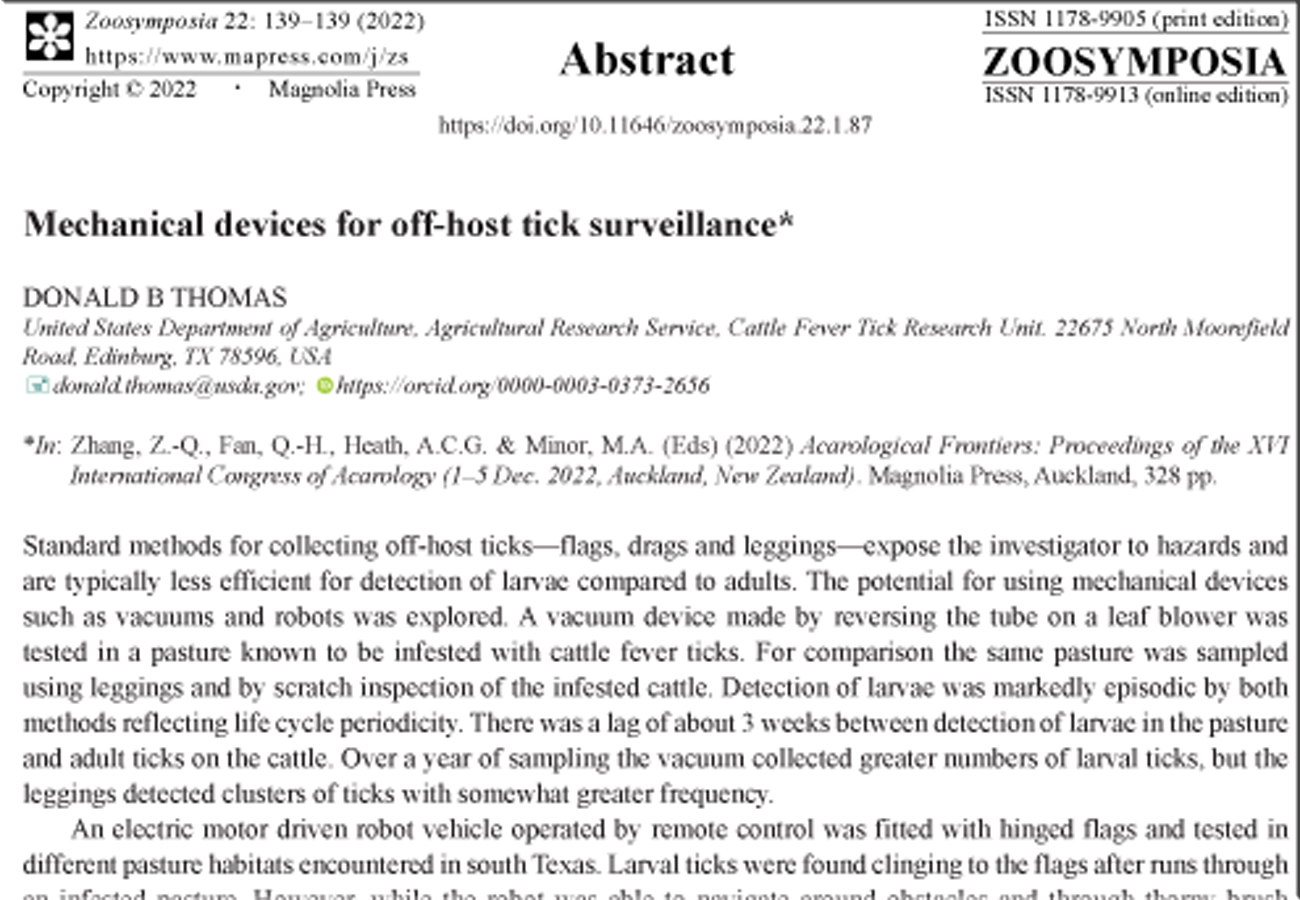Abstract
Standard methods for collecting off-host ticks—flags, drags and leggings—expose the investigator to hazards and are typically less efficient for detection of larvae compared to adults. The potential for using mechanical devices such as vacuums and robots was explored. A vacuum device made by reversing the tube on a leaf blower was tested in a pasture known to be infested with cattle fever ticks. For comparison the same pasture was sampled using leggings and by scratch inspection of the infested cattle. Detection of larvae was markedly episodic by both methods reflecting life cycle periodicity. There was a lag of about 3 weeks between detection of larvae in the pasture and adult ticks on the cattle. Over a year of sampling the vacuum collected greater numbers of larval ticks, but the leggings detected clusters of ticks with somewhat greater frequency.
References
-


